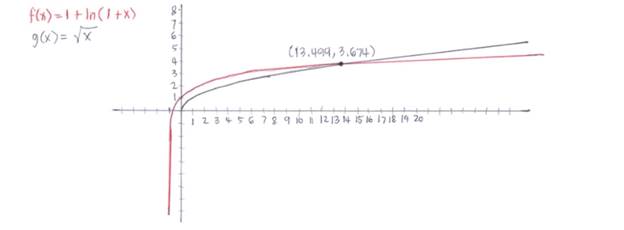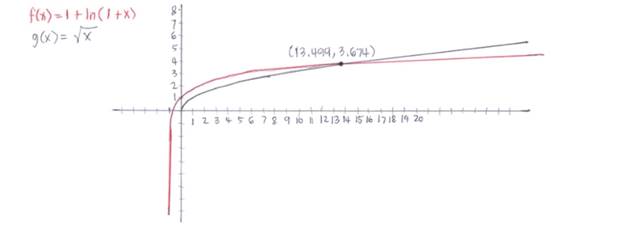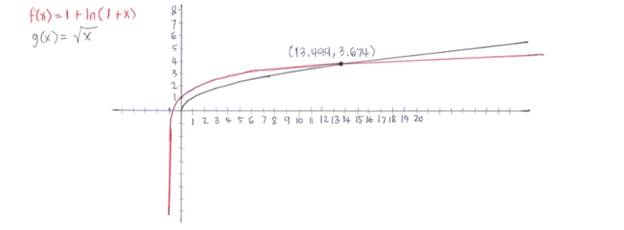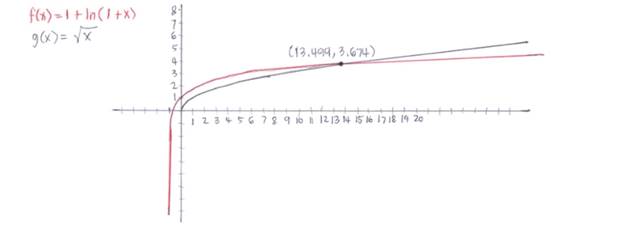
a.
To define: to draw the graphs of the functions
a.
Answer to Problem 80E
As according see the picture the blue curve the square root function will eventually take the red curve of logarithmic function.

Explanation of Solution
Given information:
The term
The function
As the picture given below the blue curve square root function will eventually overtake the red curve logarithmic function.

This is the graphing calculation in the viewing graphing window
b.
To define: The rounded of two decimal places , the solutions of the equations
b.
Answer to Problem 80E
In the graph the it is obvious form the picture above that the graphs of two functions

Explanation of Solution
Given information:
The rounded of two decimal places , the solutions of the equations
The function .
In the graph the it is obvious form the picture above that the graphs of two functions

The two functions f and g intersects at the point
The solution of the give equation rounded to two decimal is
Chapter 4 Solutions
Precalculus: Mathematics for Calculus - 6th Edition
 Calculus: Early TranscendentalsCalculusISBN:9781285741550Author:James StewartPublisher:Cengage Learning
Calculus: Early TranscendentalsCalculusISBN:9781285741550Author:James StewartPublisher:Cengage Learning Thomas' Calculus (14th Edition)CalculusISBN:9780134438986Author:Joel R. Hass, Christopher E. Heil, Maurice D. WeirPublisher:PEARSON
Thomas' Calculus (14th Edition)CalculusISBN:9780134438986Author:Joel R. Hass, Christopher E. Heil, Maurice D. WeirPublisher:PEARSON Calculus: Early Transcendentals (3rd Edition)CalculusISBN:9780134763644Author:William L. Briggs, Lyle Cochran, Bernard Gillett, Eric SchulzPublisher:PEARSON
Calculus: Early Transcendentals (3rd Edition)CalculusISBN:9780134763644Author:William L. Briggs, Lyle Cochran, Bernard Gillett, Eric SchulzPublisher:PEARSON Calculus: Early TranscendentalsCalculusISBN:9781319050740Author:Jon Rogawski, Colin Adams, Robert FranzosaPublisher:W. H. Freeman
Calculus: Early TranscendentalsCalculusISBN:9781319050740Author:Jon Rogawski, Colin Adams, Robert FranzosaPublisher:W. H. Freeman
 Calculus: Early Transcendental FunctionsCalculusISBN:9781337552516Author:Ron Larson, Bruce H. EdwardsPublisher:Cengage Learning
Calculus: Early Transcendental FunctionsCalculusISBN:9781337552516Author:Ron Larson, Bruce H. EdwardsPublisher:Cengage Learning





